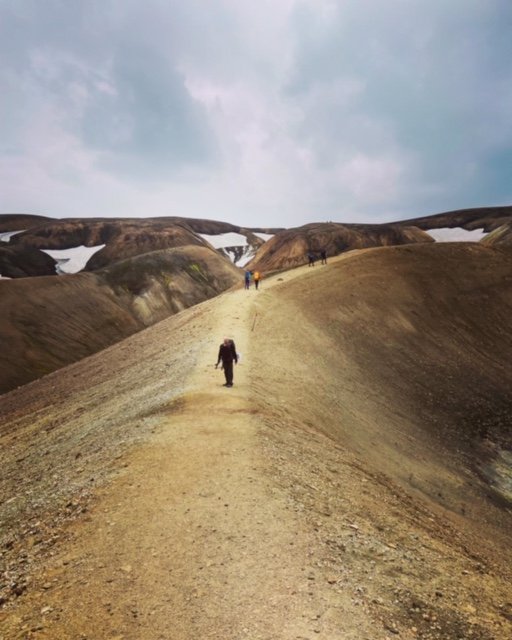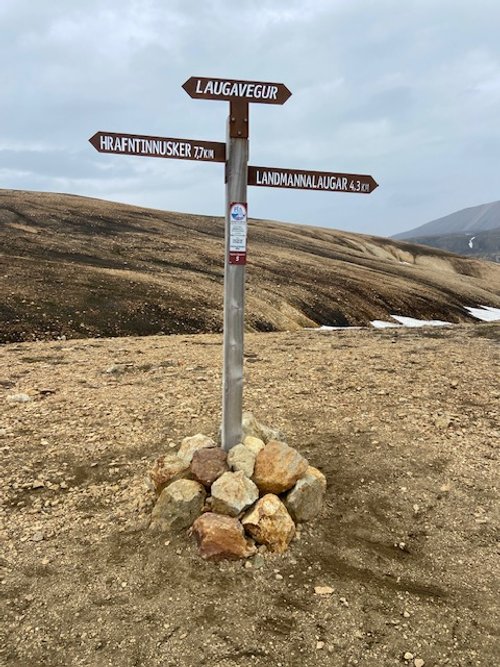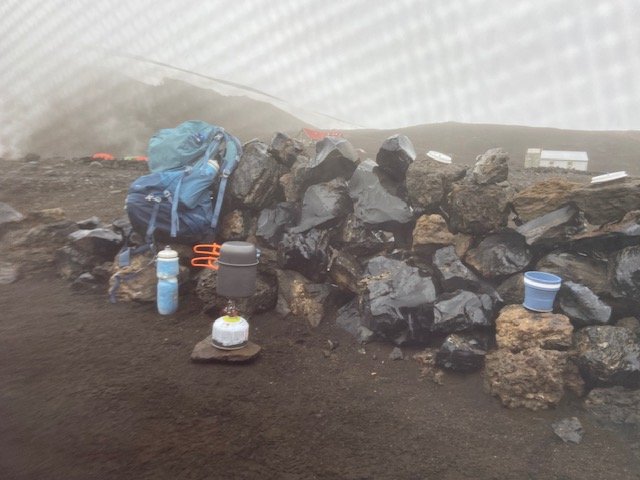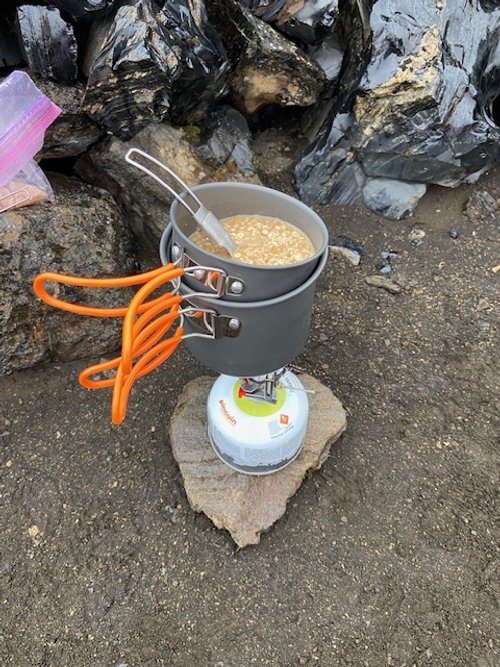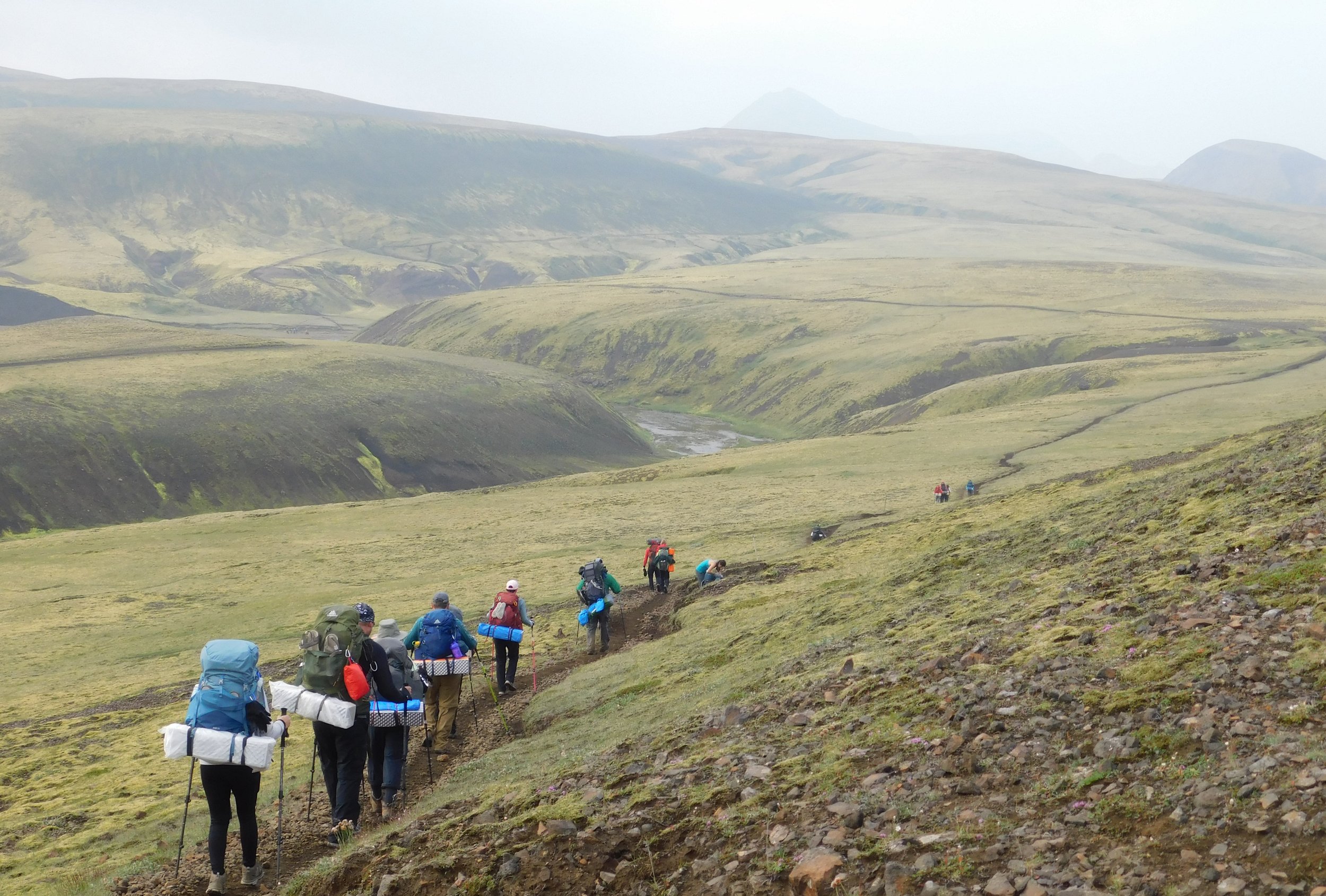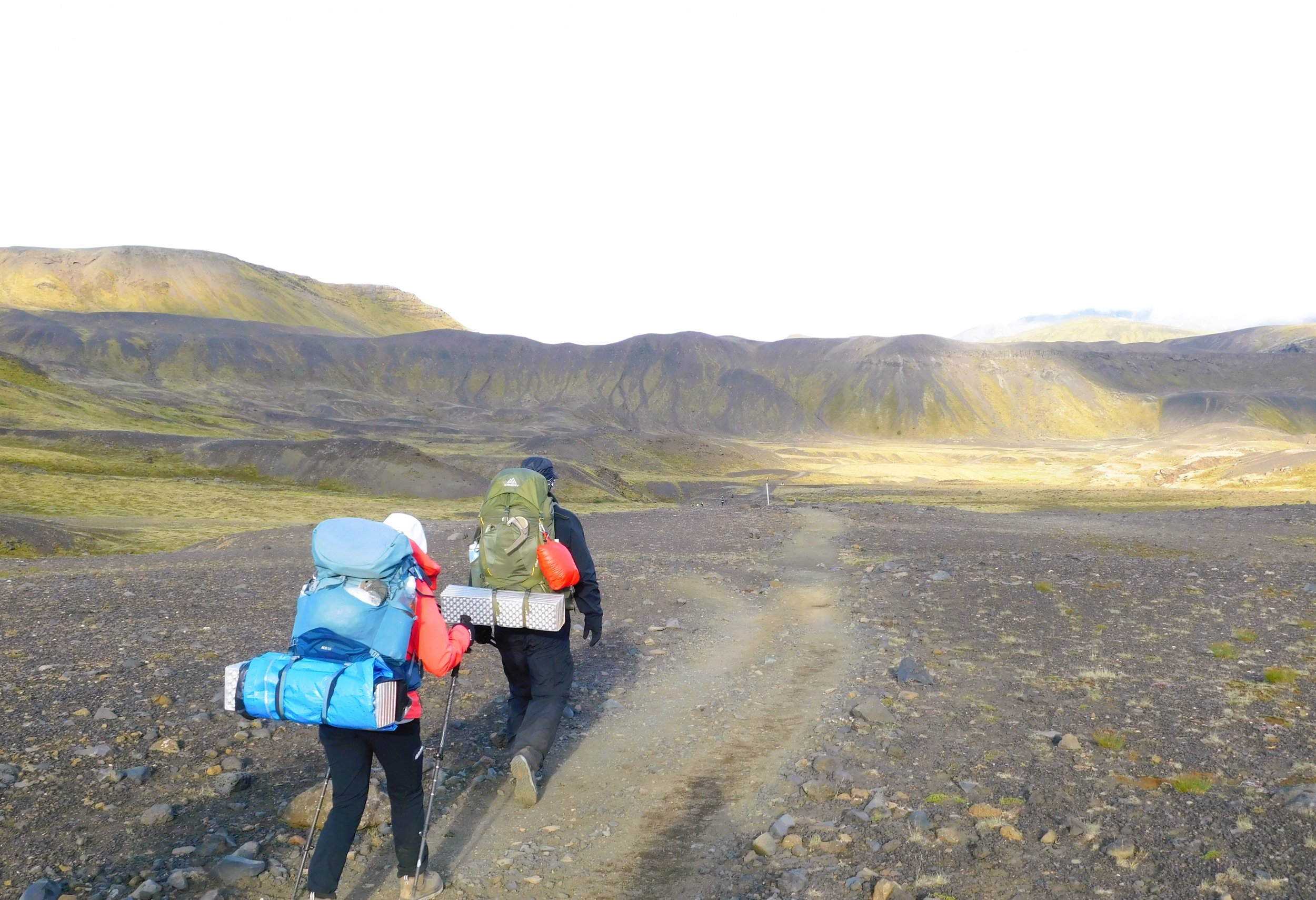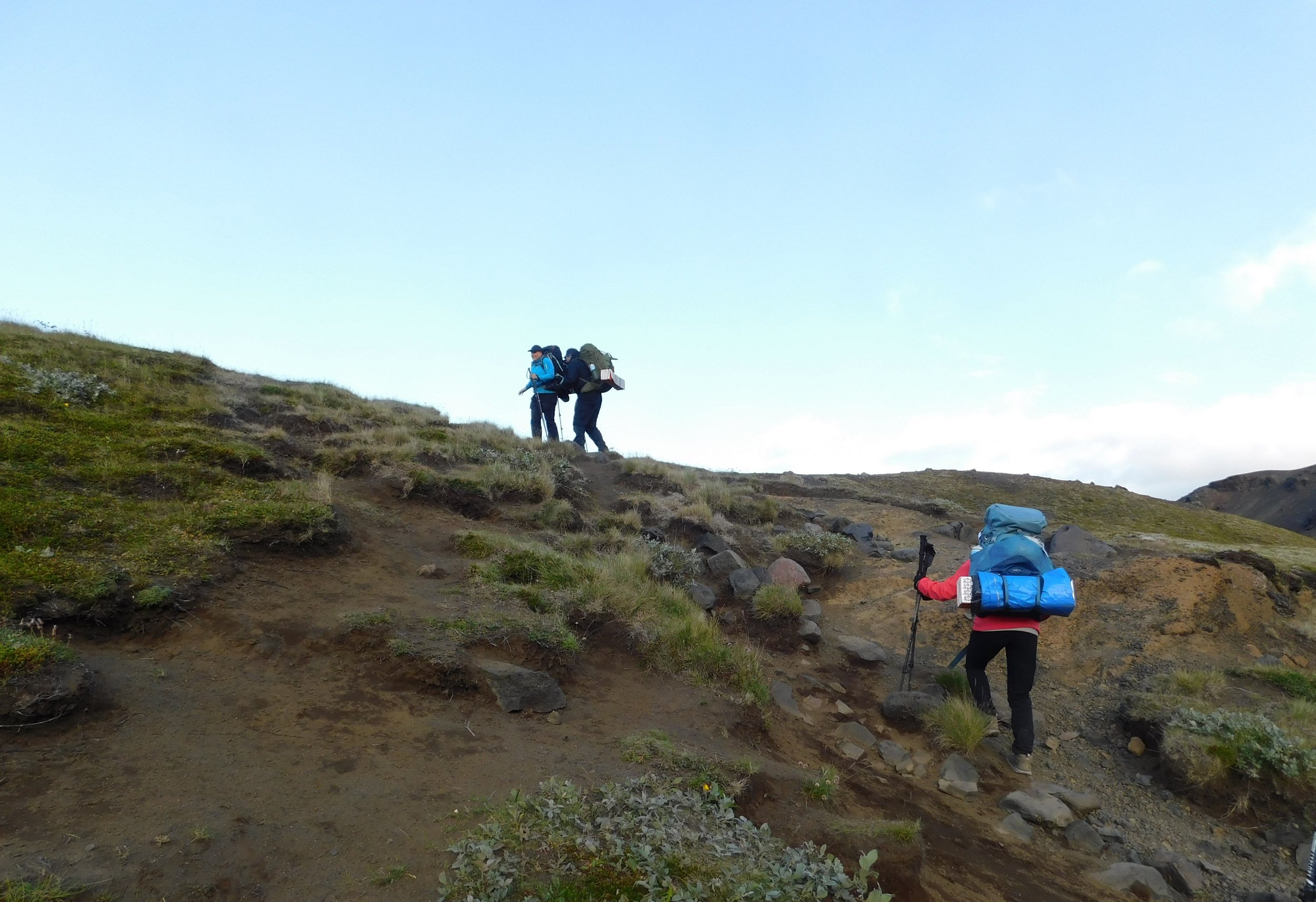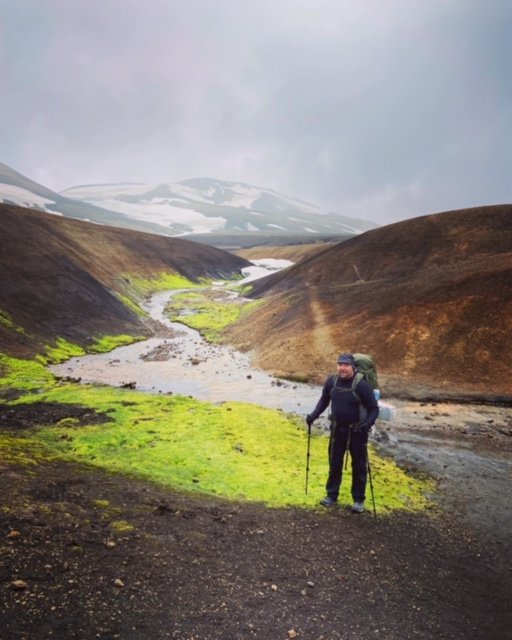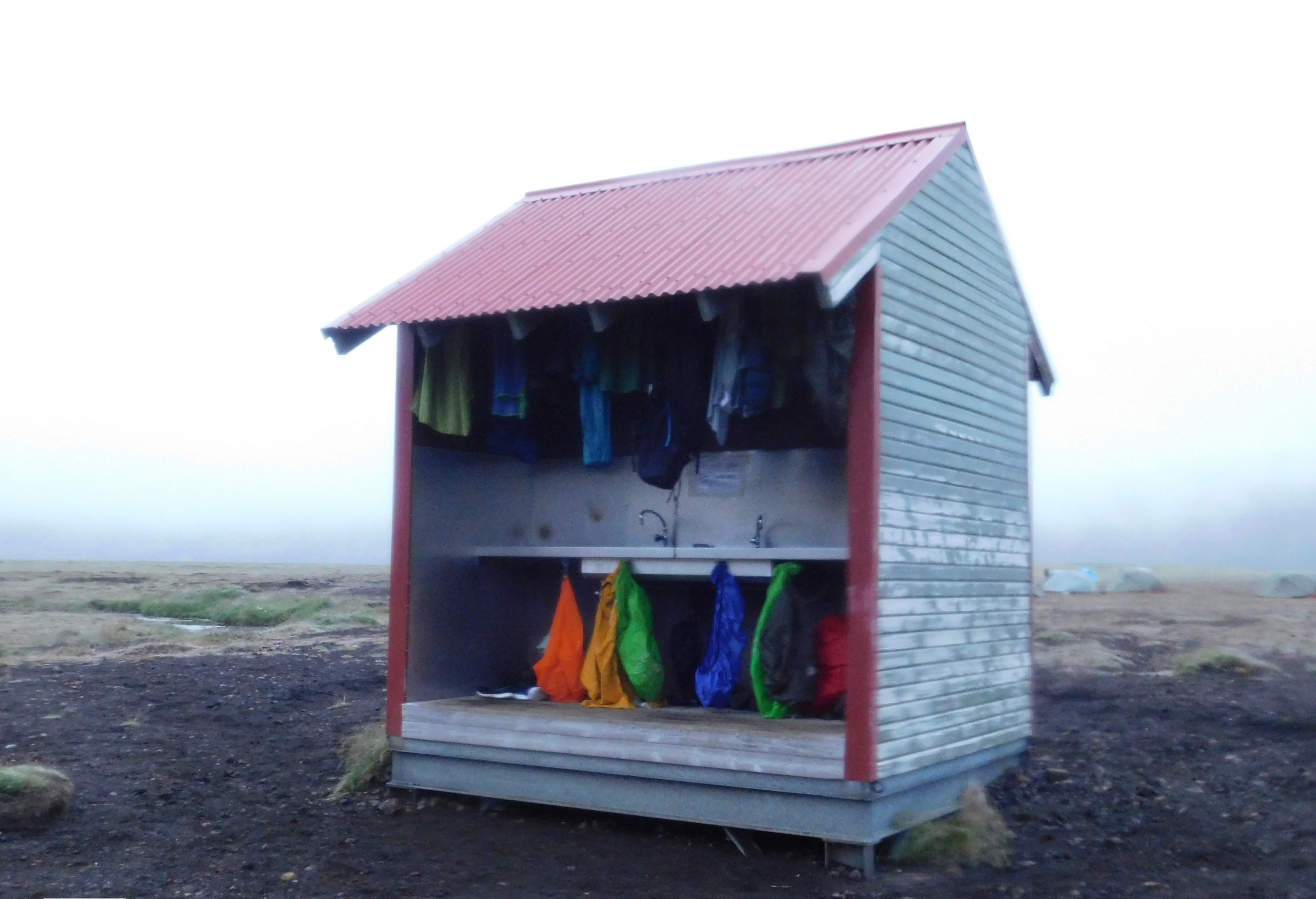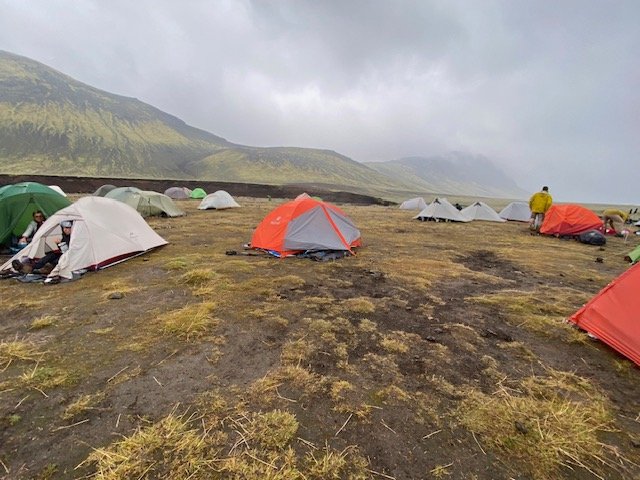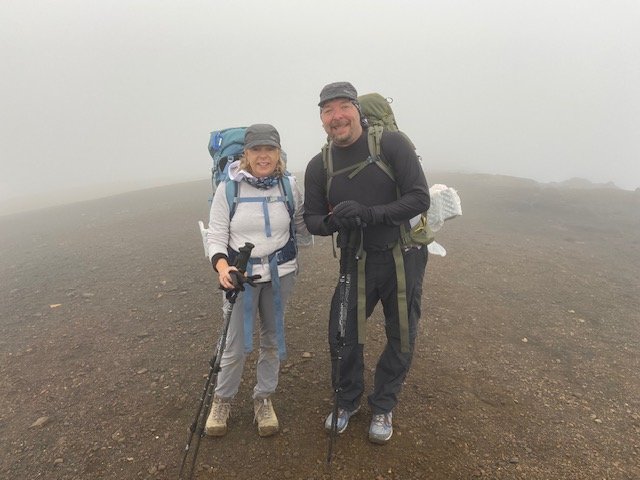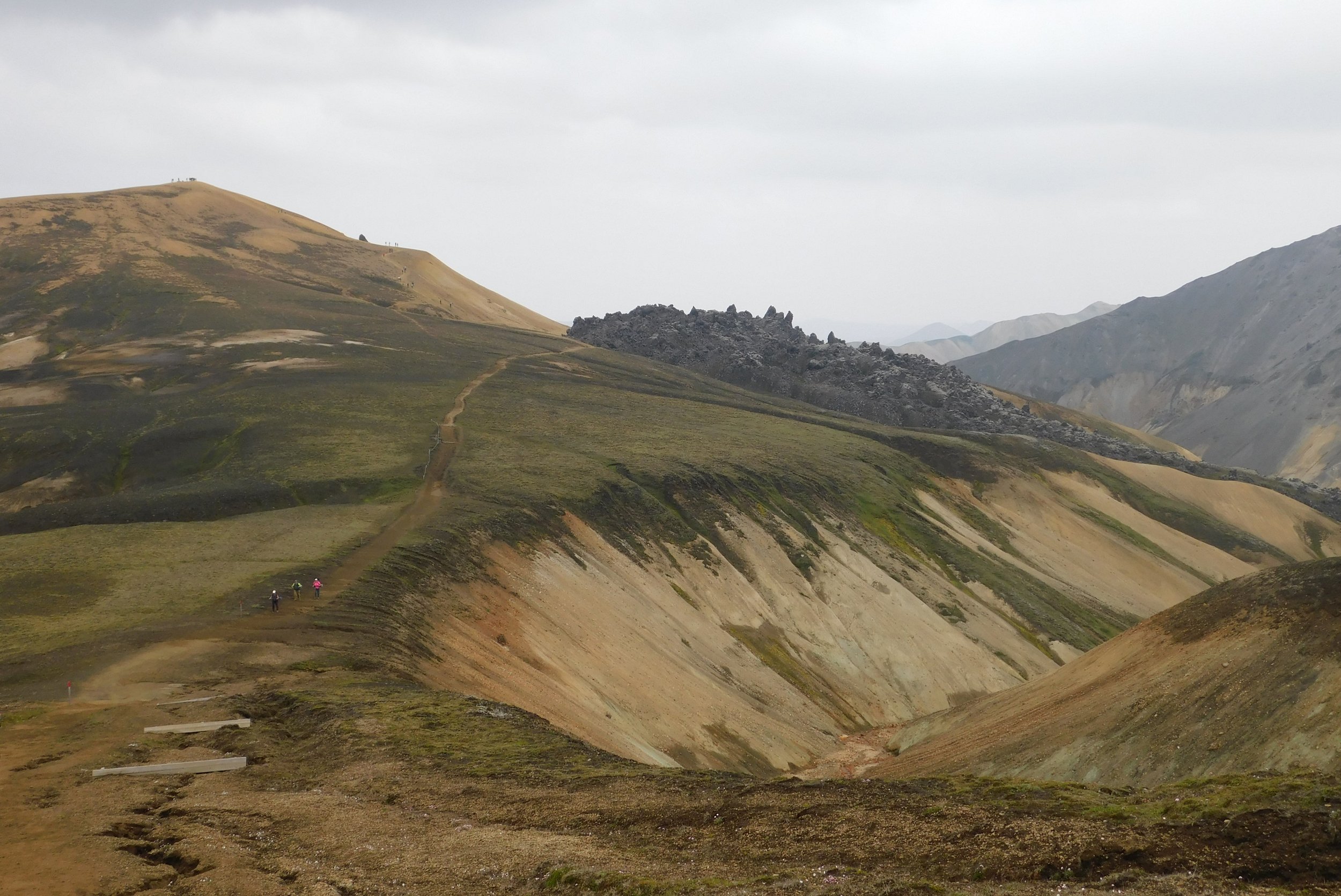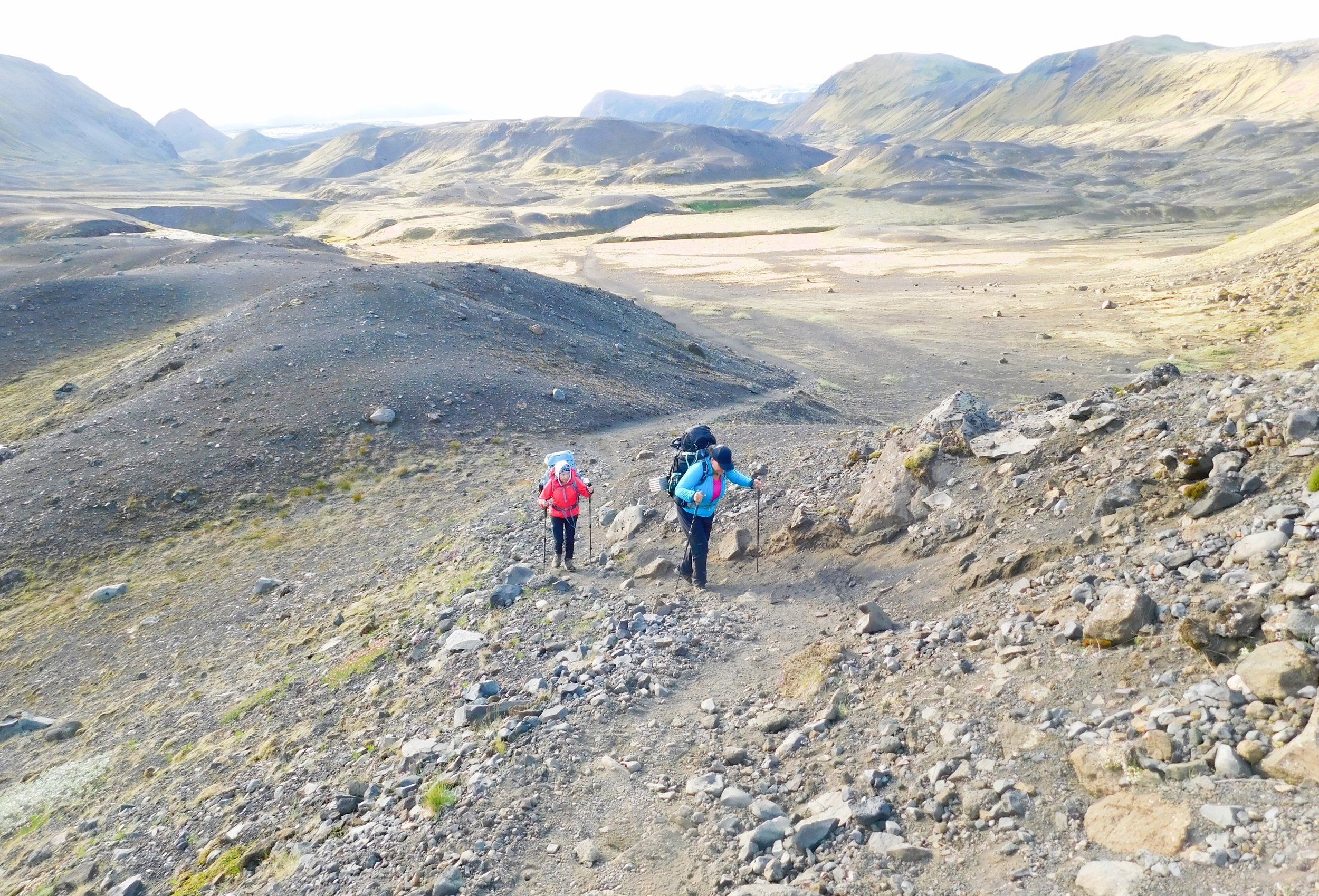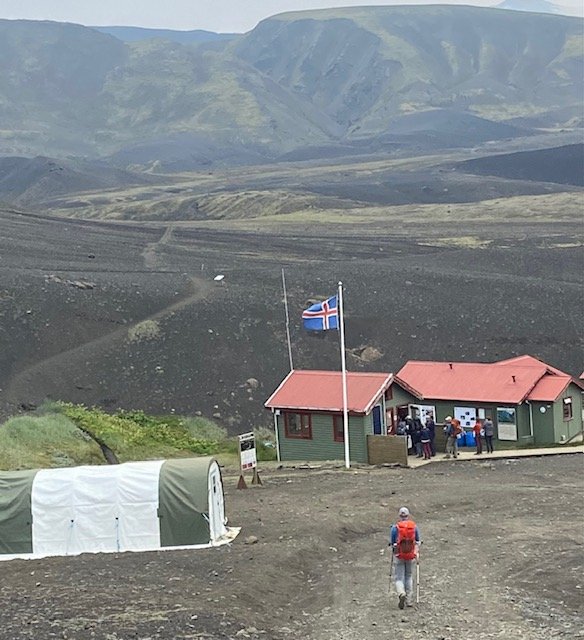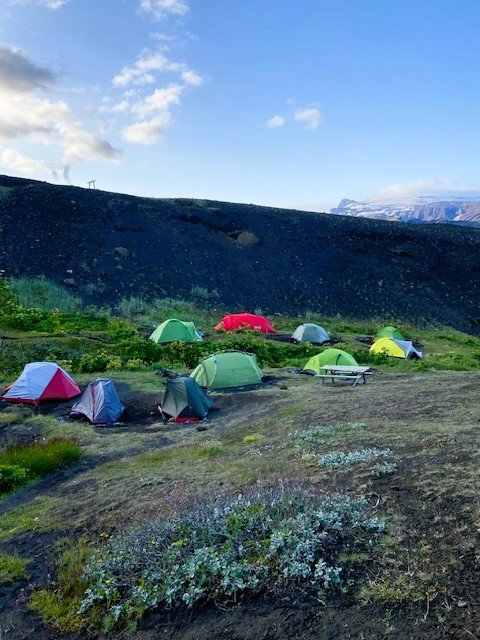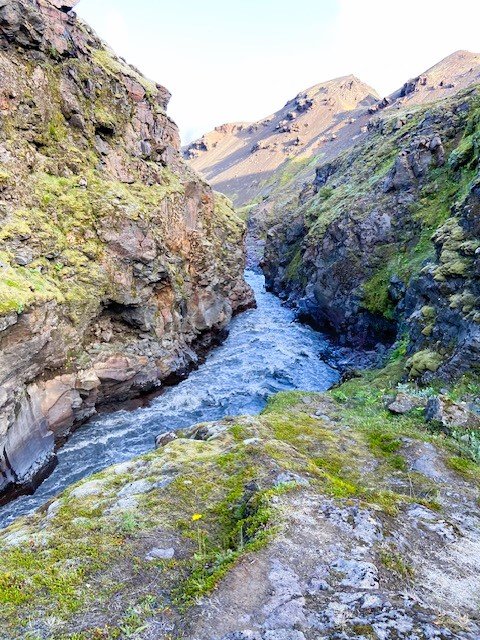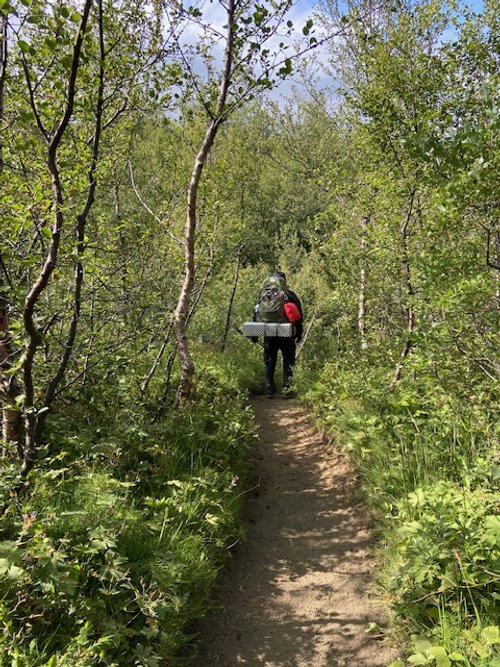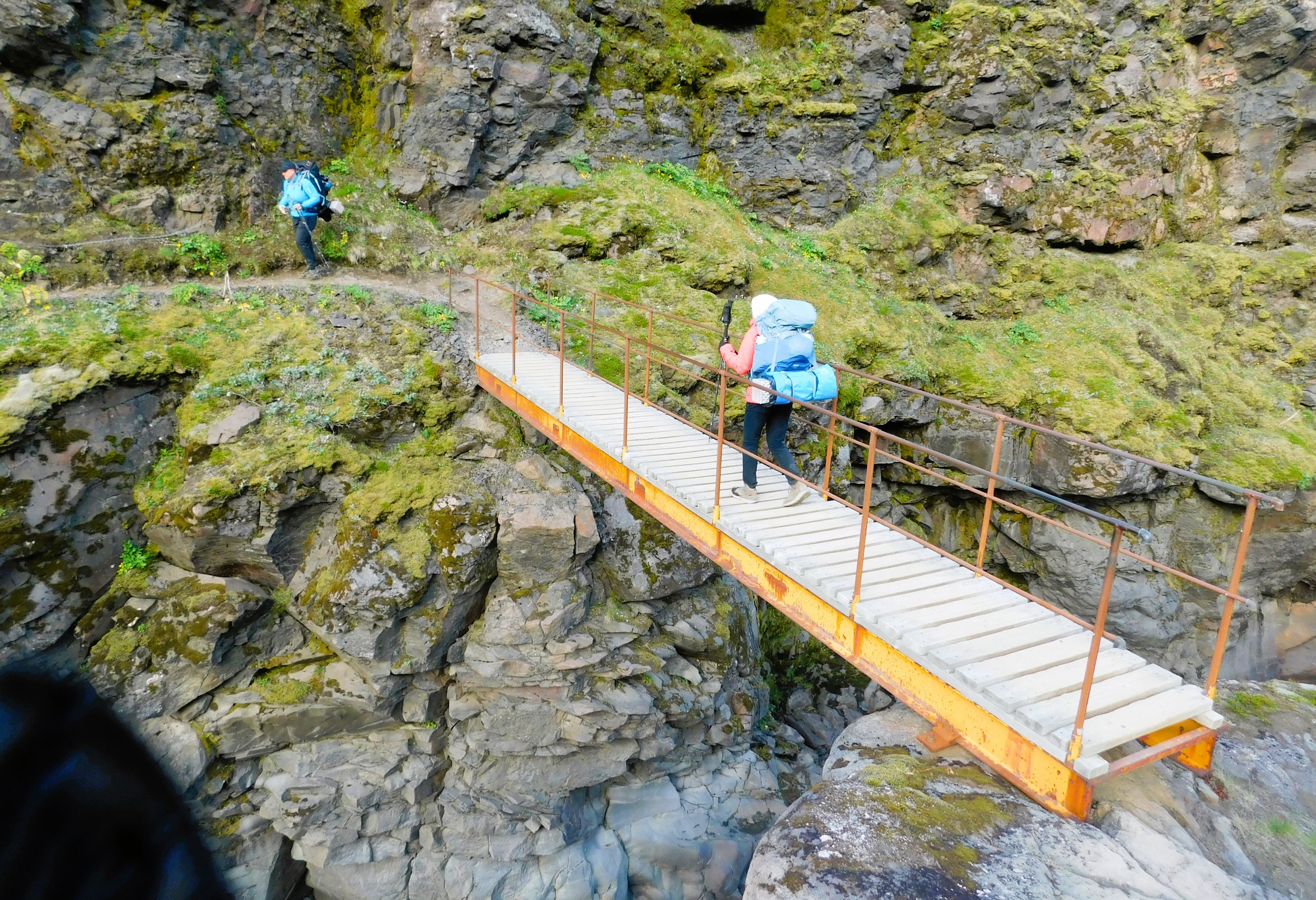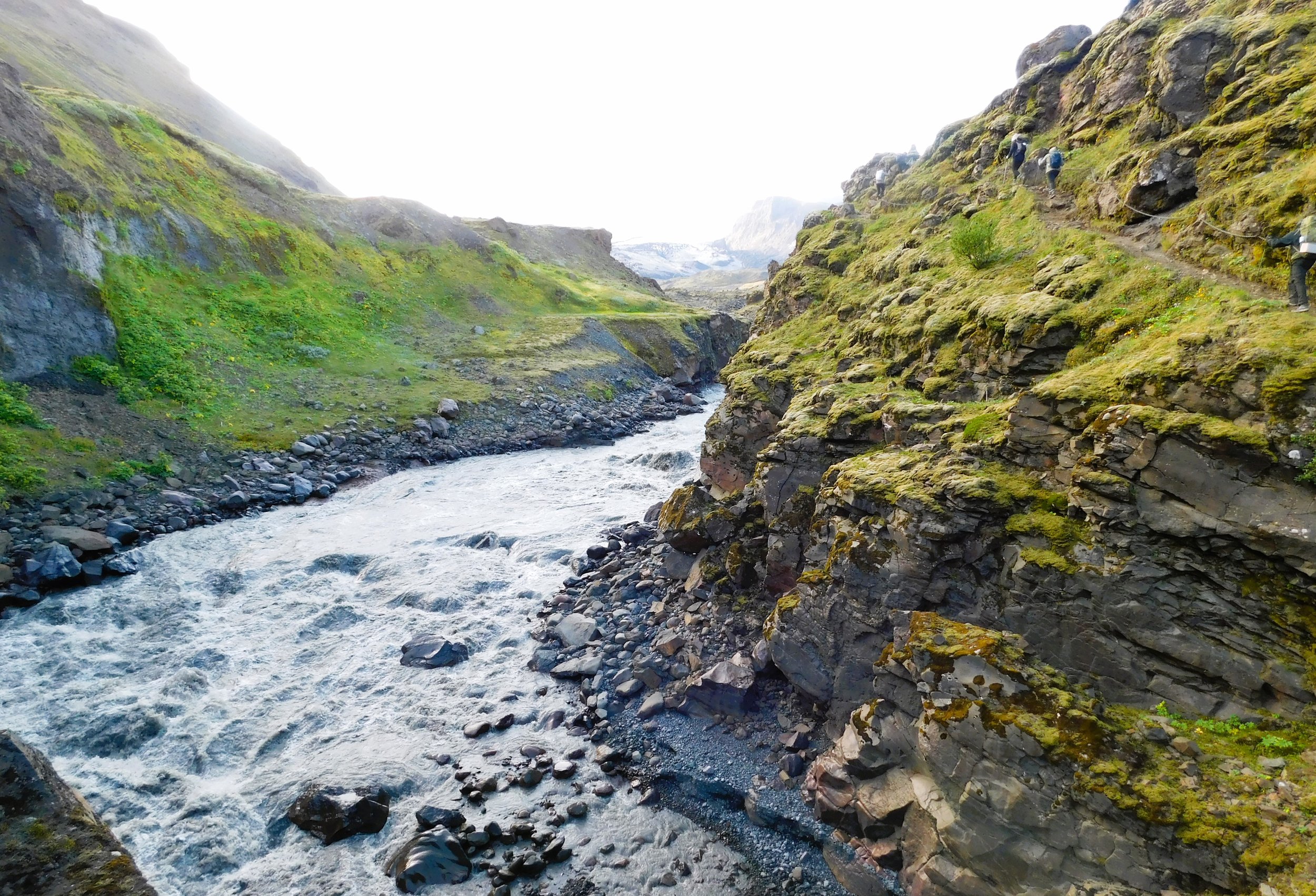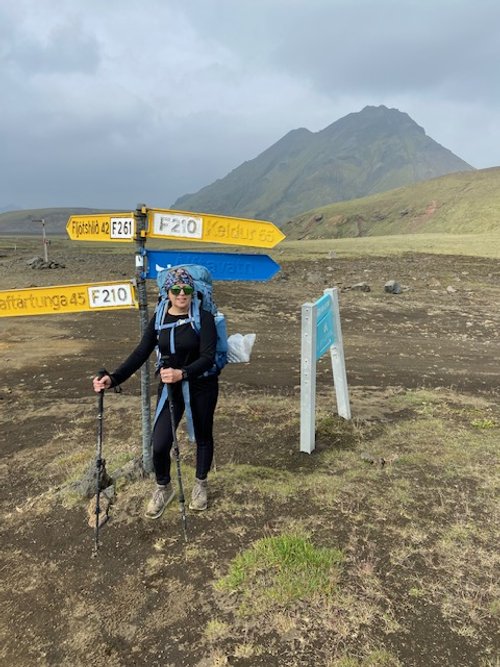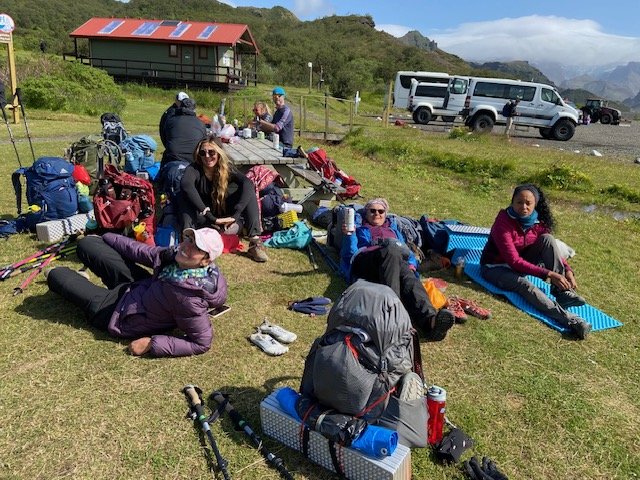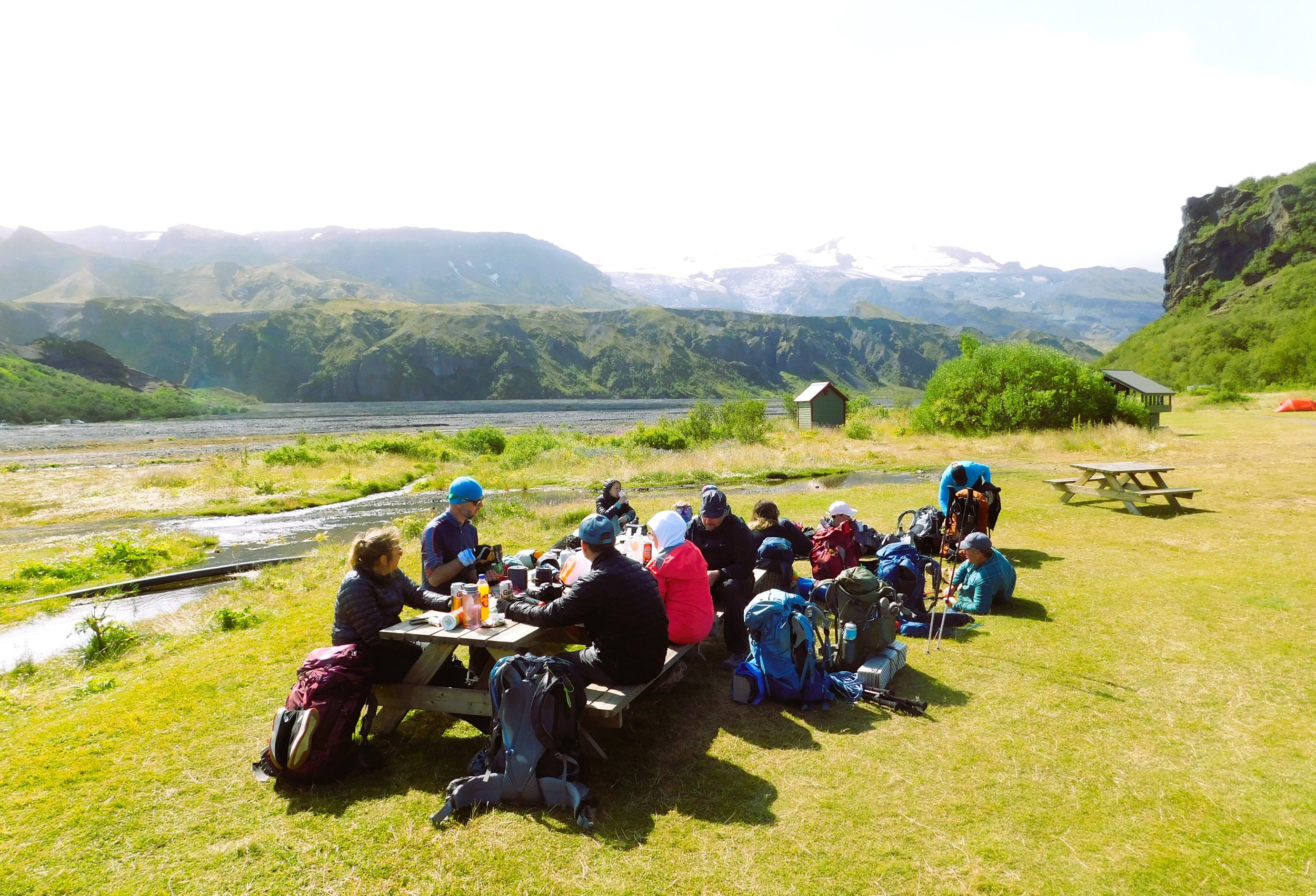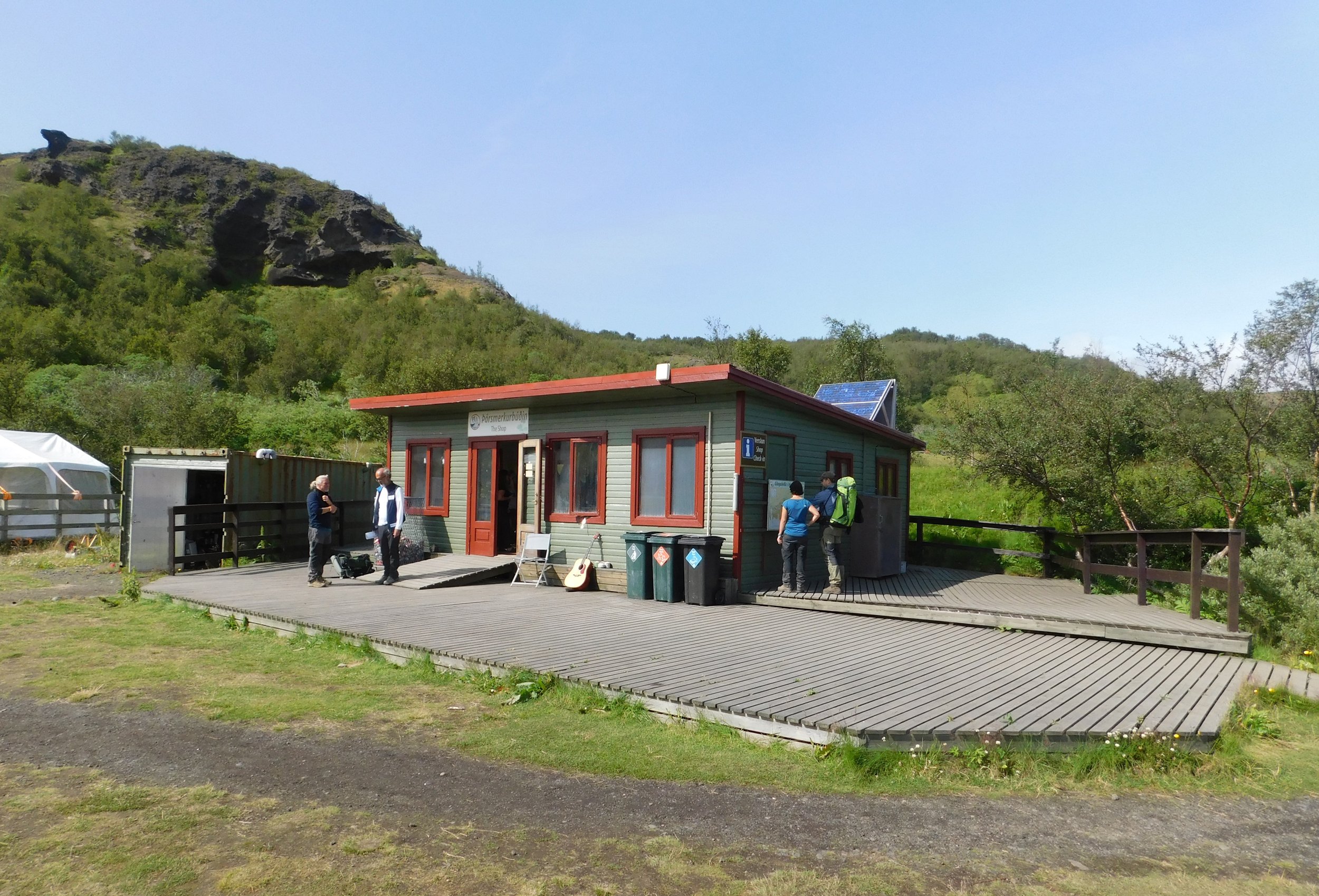Unveiling Iceland's Untamed Beauty: Trekking the Laugavegur Trail from Landmannalaugar to Thorsmork
Getting to the Laugavegur Trail from Reykjavik
Iceland, the land of fire and ice, beckons adventurers with its untamed landscapes and surreal beauty. One of the most iconic journeys in this Nordic wonderland is the Laugavegur Trail, a trek that spans from the geothermal oasis of Landmannalaugar to the lush valley of Thorsmork. We embarked on a four-day expedition through otherworldly terrains, river crossings, and breathtaking vistas to explore the heart of Iceland's highlands. The trail is open from June 25 - September 16. We trekked in July when we had maximun daylight hours.
Day 1: The Highland Bus Adventure from Reykjavik to Landmannalaugar: Our journey began in Reykjavik, where we boarded a highland bus bound for Landmannalaugar. As we left the city behind, the scenery transformed into an ever-changing canvas of lava fields and distant mountains. The bus made its way through the Icelandic countryside, crossing rivers and navigating challenging terrains. The anticipation built as we approached Landmannalaugar, where the colorful rhyolite mountains come into view. The river crossings were an adventure in themselves, setting the tone for the rugged yet awe-inspiring experience that awaited us. We departed Reykkjavik at 7:00 am to arrive in Landmannalaugar at approx 11:00 am.
As we approached the highlands, the terrain became more challenging. The bus needed to ford rivers, adding an element of excitement to the journey. The river crossings are often managed by experienced drivers who are familiar with the conditions. If you’re prone to motion sickness, it’s advisable to take a couple of ginger pills before departing on your bus journey. I didn’t mind the bumpy ride; it was all part of the adventure for me.
Arriving at the Landmannalaugar trailhead we immediately noticed the excitement and camaraderie. Fellow trekkers sharing stories and tips, creating a community atmosphere as everyone prepared for their respective journeys. The excitement in the air was palpable, fueled by the prospect of venturing into the heart of Iceland's highlands. After we arrived, we filled our water bottles, had a quick lunch and bathroom break to set out on the trail by around 12:00 pm.
Facilities:
Washrooms: Basic but functional facilities are available, offering a welcome chance to freshen up before or after your trek.
Drinking Water: Access to fresh spring water is available, allowing you to refill your bottles and hydration systems. The water is sourced from the surrounding mountains and is refreshingly cool.
Campsites: Landmannalaugar boasts designated campsites equipped with amenities such as communal cooking areas and waste disposal facilities. Whether you're camping or staying in a hut, the accommodations provide a comfortable respite.
Mountain Bus Mall: Before embarking on the Laugavegur Trail, take advantage of the Highland Bus Mall. Here, you will find a small shop offering last-minute items and essentials for your trek. It's advisable to check your gear and pick up any necessary supplies, ensuring you're well-prepared for the challenging terrain ahead.
Landmannalaugar to Hrafntinnusker: Our first day on the Laugavegur Trail took us through the surreal landscapes of Landmannalaugar. The vibrant hues of the rhyolite mountains paint an otherworldly panorama. The trail ascends through lava fields and rocky terrain, eventually leading us to the highland campsite at Hrafntinnusker. As we pitched our tents amidst this stark but beautiful setting, the isolation of the highlands becomes palpable, and the night sky reveals a sea of stars. This hike to Hrafntinnusker was a challenging 12 km and took us approx 5 hours. We allowed ourselves extra time to take pictures and soak up the beauty of the landscape. Hrafninnusker is the highest point on the trail. It’s fair to say we were exhausted but also exhilarated by the experience of our first day on the trail.
Facilities:
Toilets: Basic but functional toilet facilities are available, maintaining hygiene standards for trekkers. Composting toilets contribute to the eco-friendly ethos of the trail. Please note: There are no showers at this site.
Garbage: There is no garbage disposal at this site. You must take all litter with you.
Water Source: Freshwater is sourced from nearby springs, providing trekkers with the opportunity to refill their water bottles and hydration systems. The water is typically safe for drinking, allowing for convenient hydration during your trek.
Windbreaks: Given Hrafntinnusker's exposed location, windbreaks are strategically placed to shield campers from the brisk highland winds. These structures offer a welcome respite, especially during inclement weather.
Stunning Views: While the facilities are basic, the campsite compensates with breathtaking panoramic views. Surrounding landscapes include colorful rhyolite mountains, adding a touch of otherworldly beauty to your camping experience.
Campsite Atmosphere: Hrafntinnusker exudes a unique atmosphere, characterized by the simplicity of highland camping. Trekkers can enjoy a sense of isolation while being surrounded by the raw and untouched beauty of Iceland's interior.
Warm Gear: Due to the high elevation, temperatures at Hrafntinnusker can be chilly, even in summer. Ensure you have warm clothing, including a good sleeping bag suitable for the conditions.
Wind Protection: Given the exposed nature of the campsite, windproof gear is essential. Be prepared for varying weather conditions, including potential wind and rain.
Tent Stakes: Securely anchor your tent with sturdy stakes to withstand the highland winds. This ensures a more stable shelter during your stay.
Day 2: Hrafntinnusker to Álftavatn: Descending from the highlands, our journey unfolded through black deserts and past the stunning Markarfljótsgljúfur canyon. The landscape transformed once again as we arrivedat Álftavatn, a serene lake surrounded by contrasting greenery. The beauty of the journey lies not only in the diverse landscapes but also in the constant sense of change. This trek was my toughest day with lots of ascends and descends as we slowly made our way from the highlands. Although many felt this12 km hike was easier than day 1, I found it more challenging. The weather was cold and wet as we trekked into Alftavatn at the end of the day. We were so excited to discover hot showers and a small restaurant. We finsished the day with hot soup, a beer (or two), camaraderie with hikers from all over the world.
Facilities:
Toilets & Showers: Basic but functional toilet facilities and showers are available, contributing to the Leave No Trace principles of the trail. Trekkers can maintain hygiene while minimizing their environmental impact through the use of composting toilets. Hot showers are 900 ISK (approx $9.00 CAD) for 5 minutes. Cold showers are free but keep in mind the water is very cold glacier water.
Garbage Bins: Garbage bins are available to dispose of litter.
Cafe/Restaurant: There is a very small cafe with hot drinks, soup, sandwiches, and beer/wine for purchase. Seating is limited but it’s a great spot to relax and socialize with other hikers.
Water Source: Freshwater is easily accessible, sourced from the pristine Álftavatn Lake. Trekkers can replenish their water supplies, ensuring they stay hydrated during their Laugavegur Trail adventure.
Stunning Lake Views: One of the highlights of Álftavatn campsite is its proximity to the picturesque Álftavatn Lake. Trekkers can enjoy mesmerizing views and perhaps even take a moment to dip their toes into the refreshing waters.
Day 3: Álftavatn to Emstrur (Botnar): This 15 km trail led us through the black deserts of Mælifellssandur, offering a stark contrast to the lushness of Álftavatn. We crossed rivers and traversed the Emstrur region, surrounded by breathtaking panoramas. The Emstrur campsite, nestled in the midst of this desolate beauty, provided a unique vantage point to appreciate the rawness of Iceland's interior. We set up camp on top of a hill with the most amazing view of the mountains from our tent.
Facilities:
Toilets: Basic but functional toilet facilities are available at Emstrur, maintaining hygiene standards and adhering to responsible camping practices. Composting toilets contribute to the eco-friendly ethos of the Laugavegur Trail. There are no showers at this site.
Garbage: There is no garbage disposal at this site. You must take all litter with you.
Water Source: Freshwater is easily accessible, sourced from nearby streams or rivers. Trekkers can replenish their water supplies, ensuring they remain hydrated during their adventure through the Icelandic highlands.
Communal Dining Area: Emstrur campsite often provides communal dining area. This allows trekkers to prepare hot meals, fostering a communal atmosphere where everyone can share stories and experiences.
Scenic Views: Emstrur's campsite boasts stunning panoramic views of the surrounding landscapes. Trekkers can enjoy the rugged beauty of the Icelandic highlands, appreciating the contrast between the desolate yet captivating terrain.
Day 4: Emstrur to Þórsmörk: Our final day took us through Emstrur for16 km, with river crossings and the ever-present backdrop of glaciers. As we approached Þórsmörk, the landscape transformed once more into a green oasis surrounded by mountains. The Laugavegur Trail concludes in this valley of wonders, leaving us with a deep appreciation for the diversity and resilience of Iceland's natural wonders. We arrived at the end of the trail in the early afternoon with lots of time to celebrate our journey before being picked up by the highland bus. If you’re not ready to end your journey here, you can extend your trek on the Fimmvorduhals Trail to finish in Skogar.
Toilets & Showers: Standard toilet facilities and showers are available. Hot showers are 900 ISK (approx $9.00 CAD) for 5 minutes. Cold showers are free but keep in mind the water is very cold glacier water.
Garbage Bins: Garbage bins available to dispose of litter.
Cafe/Restaurant: There is a very small cafe with hot drinks, soup, sandwiches,snacks, and beer/wine for purchase.
Water Source: Freshwater is easily accessible. Trekkers can replenish their water supplies, ensuring they stay hydrated during their Laugavegur Trail adventure.
Stunning Views: Lush and green,trekkers can enjoy mesmerizing views and perhaps even take a moment to dip their toes into the refreshing waters.
Length: 55 km
Elevation Gain: 1,655 m
Route Type: point to point
My Final Thoughts: Trekking the Laugavegur Trail is not just a physical journey; it's a passage through the soul of Iceland. From the geothermal wonders of Landmannalaugar to the lush valleys of Þórsmörk, every step unveils a new facet of this enchanting land. The highland bus ride, river crossings, and diverse landscapes create an unforgettable tapestry of adventure, making the Laugavegur Trail a must-experience for any nature enthusiast seeking the raw beauty of Iceland's interior. As the sun sets over Thorsmork, it marks not just the end of a trek but the beginning of a lifetime of memories etched in the heart of the Icelandic wilderness.
A Few Things to Know:
You can expect to experience all weather conditions in a day so it’s important to dress in layers.
The temperature can get down to 0 degree celsius overnight in the summer.
Campfires are not allowed.
Hiking poles are highly recommended.
The trail is not suitable for beginner hikers. There are many steep inclines and declines.
I would rate the trail as moderate to challenging.
In my opinion, the first two days were the most challenging so I suggest starting the trail in Landmannalaugar to finish in Thorsmork rather than the opposite direction.
There are 3 river crossings with one being thigh to hip deep in rushing waters.
The trail is well marked so it’s possible to complete it self-guided.
Leave no trace. Bring a poop kit to use on the trail.
Camping vs Hut Accommodations on the Laugavegur Trail
Camping:
Pros:
Permits Not Required: Campsites do not need to be booked in advance. A site can be paid by credit card or Icelandnic Krono (ISK) cash to the camp warden when you arrive.
Closer to Nature: Sleeping under the stars provides an immersive experience, allowing you to connect more intimately with the natural surroundings of the Icelandic highlands.
Cost-Effective: Camping is more budget-friendly than staying in huts, making it a preferable option for those looking to minimize expenses. 2800 ISK (approx $27.00 CAD) per person per night.
Personal Space: Campsites often offer more personal space, allowing you to enjoy a quieter and more private camping experience.
Cons:
Weight of Camping Gear: Carrying camping gear, including a tent, sleeping bag, and cooking equipment, adds weight to your backpack. This might be a concern for those looking to travel light.
Weather Dependency: Camping exposes you to the elements, and weather conditions in the highlands can be unpredictable. Be prepared for rain, wind, and even snow.
Limited Amenities: Campsites may have basic amenities but lack the comforts of huts, such as kitchen facilities and indoor common areas.
Hut Accommodation:
Pros:
Comfort and Shelter: Huts provide a comfortable and sheltered environment, shielding you from the unpredictable Icelandic weather.
Cooking Facilities: Huts usually offer communal cooking facilities, allowing you to prepare hot meals. This can be a significant advantage, especially in the colder months.
Social Atmosphere: Staying in huts creates a social atmosphere, providing opportunities to meet fellow trekkers and share experiences.
Reduced Gear: Huts eliminate the need to carry a tent and cooking equipment, reducing the weight of your backpack.
Cons:
Cost: Accommodations in huts can be relatively expensive compared to camping. Booking and payment is required several months in advance. 13000 ISK (approx $127.00) per person per night.
Limited Availability: Huts have a limited capacity, and during peak trekking seasons, securing a spot can be competitive.
Less Privacy: Huts may have dormitory-style sleeping arrangements, offering less privacy compared to camping.
To book a hut or to get more information on camping, click here: https://www.fi.is/en






